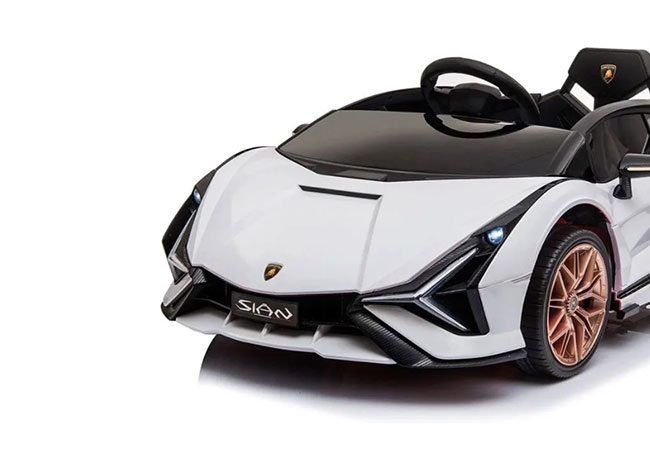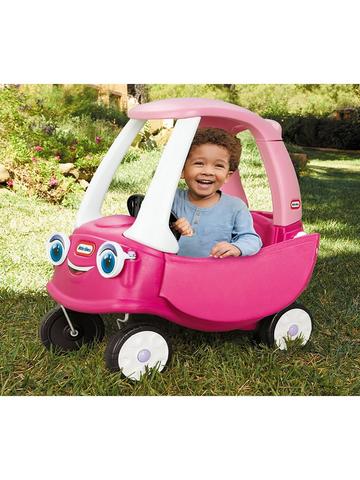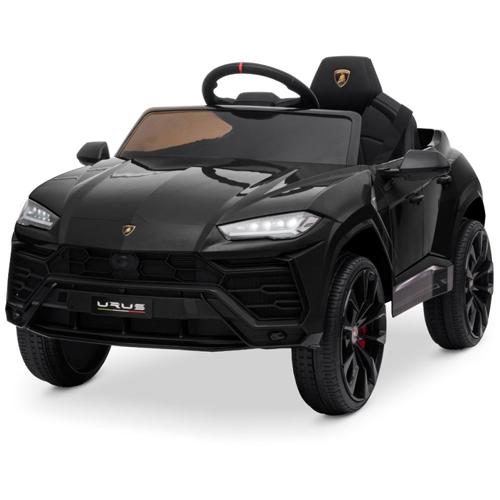Excellent Ideas On Deciding On Kids Ride On Cars
Excellent Ideas On Deciding On Kids Ride On Cars
Blog Article
What Safety Features For Ride-Ons Should I Consider? What Are The Advantages And Disadvantages?
It is important that you take into consideration safety features when choosing the best car for your kids. These will help to ensure that they are safe and comfortable during playtime. Here are some essential safety features to think about, along with their pros and cons - Seat Belts -
Seat belts are a great way to keep your child secure when riding on the vehicle. This reduces the chances of them falling or being thrown out of the vehicle during play. They also provide extra protection especially during sudden stops or turns.
Pros - Not all ride-on automobiles have seatbelts. This is especially true for those made specifically for young children. Belts could cause discomfort to children and cause them to refuse to wear them.
Sturdy Construction
Pros - A ride-on car made of sturdy and durable materials is more robust and resistant to damages that ensures long-term safety and durability. It is able to stand up to the demands of playtime and provide stability when used.
Pros - Sturdy materials can be expensive and might not be affordable for some families. Additionally, heavier materials may affect the portability and maneuverability of the ride-on car.
Low Center Of Gravity
Pros: Ride-on cars with a low centre of gravity are prone to a lesser chance of tipping over. This reduces the chance of injury or accident. They are more stable and provide better balance, particularly during turns or maneuvers.
Cons - Some cars with low centers of gravity can sacrifice their off-road ability or ground clearance. This can limit their use in certain environments.
Parental Remote Control
Pros: Ride-on vehicles that can be controlled remotely permit parents to supervise and direct their child while they play. This provides an additional layer of security and protection. Parents can intervene in the event of emergency, navigate difficult terrain, or prevent collisions.
Cons - Remote parental control can restrict a child's autonomy as well as independence and freedom to play as they will rely on the direction and assistance of their parents when they play. Furthermore, the cost of remote-controlled ride-on cars can be higher than that of the manual versions.
Speed Limiters -
Pros: Ride-ons with speed limits or speed settings that can be adjusted permit parents to control the maximum vehicle speed to reduce collisions and accidents. They can gradually increase the speed as the child grows in confidence and develops.
Cons - Some children may get out of the lower speeds quickly, which can lead to anger or dissatisfaction from the ride-on cars. Also the speed limiter may not be included in all models. Also, it could require an extra feature or accessory.
Safe Start Technology -
Pros- Safe start provides smooth and steady stops and starts of the car ride which reduces the danger of abrupt movements or jerks which could frighten a child or cause them to become unsteady. It is safer and more comfortable to ride in.
Cons - Ride-ons equipped with safe-start technology are more expensive. Children may find the gradual acceleration of deceleration less exciting than immediate stops and begins.
Enhances Visibility -
Pros: Ride-on vehicles with improved visibility, such as headlights and taillights that work or reflective materials may increase visibility in dimly lit or low-light conditions. They increase security by making the car more visible to other pedestrians or vehicles.
Cons - The visibility enhancements can drain the battery faster or complicate the design of the ride-on vehicles, increasing the chance of malfunctions and maintenance problems.
You can ensure your child's safety by considering the advantages and disadvantages of these features. Have a look at the top Mercedes kids car for blog examples including toy and car, ride on digger, toy with car, electric rideons, toy with car, ride on digger, electric car ride, electric two seater cars, two seater electric cars, ride of car and more. . 
What Kind Of Assembly And Maintenance Specifications Are Required For Children's Ride-On Cars?
It is common for kids ride-on cars to require assembly and also regular maintenance in order to maximize performance and safety. These are the assembly requirements and routine maintenance requirements for child's ride on vehicles.
Most ride-on cars come partially assembled and require some assembly upon the arrival. It usually involves attaching parts such as wheels, seats, steering wheel and other components according to the manufacturer's instructions.
Follow the assembly guidelines carefully, making sure the components are properly attached and properly aligned. As directed, complete the assembly using the tools and hardware provided.
Cleaning -
To allow the vehicle to look the best and perform efficiently, regular maintenance is required. Use a dampened soft cloth with water and mild soap to clean exterior surfaces.
Attention should be given to areas prone of accumulation such the wheels, tire and undercarriage. Use a brush or a tooth brush to scrub areas that are hard to reach, and also remove hard-to-remove dirt.
Avoid using harsh chemicals and detergents that are abrasive. They can damage electronic components or paint on your ride-on vehicle.
Battery Care
If the ride-on car is powered by a rechargeable battery, proper battery care is essential to maintain performance and prolong battery life. These tips will aid you in maintaining your battery.
Make sure to fully charge your battery prior to the first time and each time you make use of it, to ensure maximum running time.
Do not overcharge your battery, or leaving it connected to a charger for a long time. Both can damage it and decrease its life span.
When not being used, store the ride-on vehicle as well as the battery in a cool, dry location away from direct sunlight.
Regularly check the battery terminals to check for any damage or corrosion and clean them with a wire brush or terminal cleaner If needed.
Replace the battery when it's not charging, or if there are indications of damage.
Tire Maintenance -
Regularly check the tires for indications of wear, damage or air loss. Inflate the tires to the recommended pressure using an air pump or bicycle compressor if needed.
Check the tread pattern of your tires to identify foreign objects and debris that could cause punctures or flats. Remove obstructions, and replace damaged tires or repairing them when needed.
Lubricate the wheels and axles bearings periodically to ensure a smooth and efficient rotation. reduce friction.
Repair or replace parts as needed -
Cars that ride on may need repair or replacement of parts due wear and tear or damages.
Watch for signs of malfunction, such as unusual noises, a decrease in power, or an unsteady performance. Refer to the manufacturer's guidelines or call Customer Support for help troubleshooting.
Replace worn out or damaged components promptly to avoid further damage and ensure security and functionality of the vehicle that rides on.
Follow these assembly guidelines and maintenance tips will ensure your child will have hours of fun while playing safely. View the recommended go here on ride on toys for more advice including ride electric car, toy and car, childrens electric ride on, race car toy car, remote control childrens car, remote control childrens car, remote control childrens electric cars, car toy car toy, childrens electric cars, toy with car and more. . 
What Is The Most Reliable Remote Control Car For Children? What Are Their Advantages And Disadvantages?
Remote control cars for kids are also referred to as remote controlled vehicles or RCs. They come in a variety of styles, price points and sizes to meet every budget and preference. Pros and cons, and the dimensions and types, as well as the prices, and styles of remote-controlled cars for children are listed below.
Electric RC Cars - Battery-powered remote-controlled vehicles that are suitable for outdoor and indoor use. They are available in a variety of designs, such as trucks, buggies, and sports cars.
Nitro RC Cars - Gas-powered remote-controlled vehicles that provide more speed and performance, but require more maintenance and knowledge to operate. They are larger and usually cost more than electric RC Cars.
Scale Models can be controlled remotely which include vehicles, trucks and aircrafts. Scale models are available in different sizes, ranging from 1-10 to 1-24. The larger scales provide more detail and realism.
Sizes -
Remote control cars for children come in a variety of sizes, from small micro-sized models to large-scale replicas. The size of the car can have an impact on the efficiency of a car in terms of speed, as well as its handling capabilities.
Micro-sized cars are small and light. This makes them perfect for indoor use with younger children. These larger models have greater power and endurance and are ideal for outdoor racing and off-road driving.
Prices
The cost of remote-controlled cars for children differ based on factors like size, features, brand and quality of construction.
Micro-sized electric RC cars can be priced between $20 and $100, while larger-scale nitro and electric RC vehicles can cost between $100 and $500 or more.
Models and high-end hobbies RC cars range from a few hundred to more than a 1000 dollars, depending on the amount of detail.
The Pros and Cons of -
Pros -
Entertainment - Children's remote controlled cars can provide hours of excitement and enjoyment for both adults and children.
Skills development The RC car helps children to improve their spatial awareness as well as hand-eye coordination.
Social Interaction-RC cars can be played by family members and friends, encouraging social interaction and collaboration.
Aftermarket parts such as upgrades, accessories, and other products from the aftermarket can be used to modify numerous RC vehicles and enhance their performance.
Cons -
Costs - A car that is remote controlled for children that has advanced features or even hobby grade models can be expensive.
Learning Curve: Operating a RC car takes some practice and. Children who are younger may find it difficult to control the controls.
Maintenance: Cars in RC require regular maintenance including cleaning, oiling, and occasionally repair or replacement of parts.
Safety Issues - RC vehicles could be hazardous when they are not used properly under the supervision of an adult. They could result in accidents, falls and electrical dangers.
Overall, remote controlled children's cars provide an exciting and educational experience for kids of all ages, however it's essential to consider factors such as the size, price, features, and safety when choosing the right car for your child. For older children, hobby grade RC car models may be a better choice. But, smaller models are also an ideal choice for children who are younger. Follow the most popular remote control childrens cars kidscars.co.uk advice for blog advice including toy cars, childrens digger, electric ride on, race car toy, toy ride, electric ride on cars, kidscars, ride on car, electric toy car, toy with car and more. .